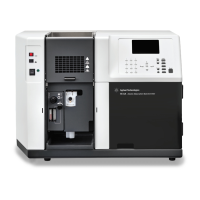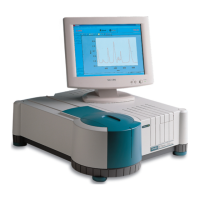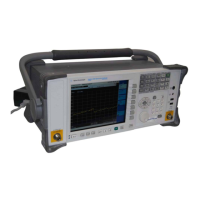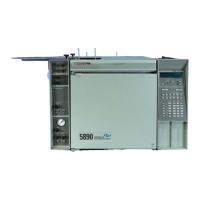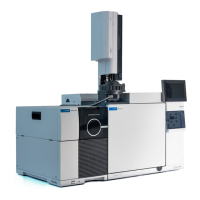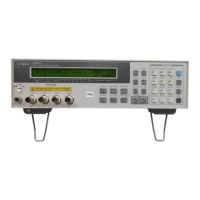46 5977B Series MSD Troubleshooting and Maintenance Manual
2 General Troubleshooting
High abundances at m/z H
2
O [18], N
2
[28], O
2
[32], and CO
2
[44] or at
m/z 14 and 16
• System was recently vented (residual air and water)
• Air leak, large peaks at m/z 14 and 16 are symptomatic of especially large leaks.
Mass assignments are incorrect
Small shape changes at the top of the mass peaks can cause 0.1 m/z shifts in
mass assignments. Shifts greater than 0.2 m/z indicate a possible malfunction.
• MSD has not had enough time to reach thermal equilibrium
• Scan speed is too fast
• Large variations in the temperature of the laboratory
• MSD has not been tuned recently, or at the temperature at which it is operating
• Incorrect tune file (inappropriate parameters)
• No voltage to extractor lens (if using an extractor ion source)
Peaks have precursors
The tune report lists the size of the precursors for the tune masses. Small
precursors are not unusual. If the precursors are unacceptably large for your
application, one of the following may be responsible:
• Repeller voltage is too high
• Peaks are too wide
• Incorrect DC polarity on the quadrupole mass filter
• Dirty quadrupole mass filter
Peak widths are inconsistent
• MSD has not had enough time to reach thermal equilibrium
• Large variations in the temperature of the laboratory
• Incorrect tuning
• Calibration vial(s) empty or almost empty
• Calibration valve(s) not working correctly
• Dirty ion source
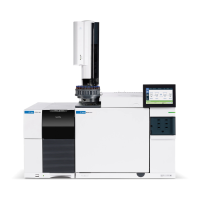
